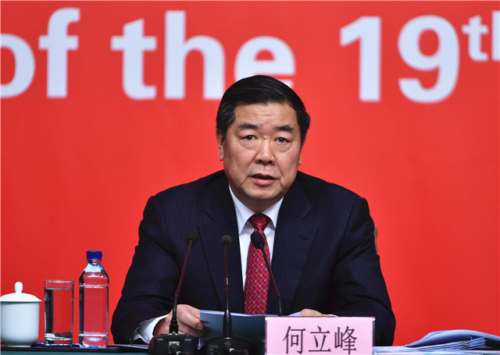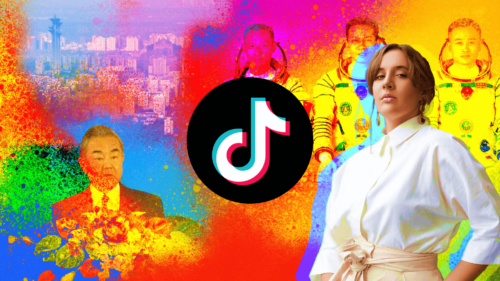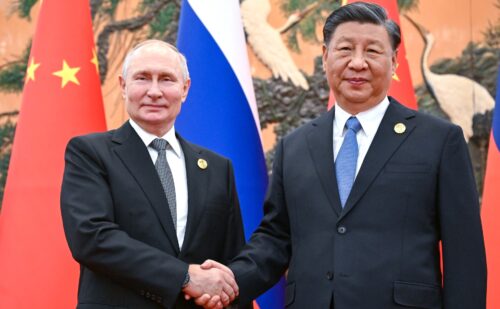The contradictions of Chinese diplomacy
While Chinese Foreign Ministry spokesperson Zhao Lijian’s rhetoric implies a deterioration of Sino-American relations, Chinese ambassador to the U.S. Cui Tiankai’s rhetoric seems to imply that a truce is possible between the world’s two most powerful nations. Who should we believe?

In recent weeks, to the backdrop of the COVID-19 pandemic, Chinese diplomats have broadcast conflicting messages on the international stage, vacillating between indicating their desire to cooperate with America and criticizing the Trump administration for politicizing the virus. This whiplash of diplomatic dialogue, evident in newspaper headlines and Twitter posts from diplomats, can seem disorienting for outside observers.
But when one considers the intended audience for these messages, the method behind this madness becomes clear. Namely, Chinese diplomatic rhetoric must cater to both domestic and international onlookers. In order to maintain the government’s image for a Chinese audience, diplomats are forced to perpetuate claims that alienate them from the international community. It’s a tricky tightrope they walk.
The antagonistic strain of Chinese diplomatic rhetoric is led by Zhào Lìjiān 赵立坚, the deputy director of the Foreign Ministry Information Department who became famous for his strident Twitter presence. Zhao has suggested that the virus did not necessarily originate in China, and even endorsed the conspiracy theory that the United States military brought COVID-19 to Wuhan. Posting from his official Twitter account to more than 500,000 followers in March, he declared, “It might be US army who brought the epidemic to Wuhan. Be transparent! Make public your data! US owe us an explanation!”
Zhao’s style of diplomacy, classified as “Wolf Warrior” diplomacy (after the 2015 patriotic Chinese film Wolf Warrior 2), is encouraged among China’s diplomatic ranks. The Chinese government has urged its diplomats over the past year to display more “fighting spirit” when advocating for Beijing’s interests on issues like the U.S.-China trade war and anti-government protests in Hong Kong. Now, battered by criticism for its less-than-transparent handling of the pandemic, that “fighting spirit” is being put to the test.
But not all of the rhetoric from Chinese diplomats has been antagonistic. Cuī Tiānkǎi 崔天凯, the Chinese ambassador to the U.S., has struck a more conciliatory chord. On April 5, Cui published an op-ed in the New York Times titled, “China and the U.S. Must Cooperate Against Coronavirus.” Cui wrote, “Let’s acknowledge there has been unpleasant talk between our nations about this disease. But this is not the time for finger-pointing. This is a time for solidarity, collaboration and mutual support.” The next week, Cui tweeted, “We never want any escalation of tension between China and the US…Let’s work together to respond to the global crisis, to save people’s lives, to save the future of global economy and the global community.”
Even more notably, Cui rebuked Zhao’s theory about the American origin of COVID-19, calling it “crazy” and “harmful” in an interview with Axios on HBO. Cui’s more tactful approach has been met with sighs of relief from the international community. While Zhao’s rhetoric implies a deterioration of Sino-American relations, Cui’s rhetoric seems to imply that maybe, with some hard work from both sides, the world’s two most powerful nations can reach a truce. These seemingly dichotomous messages have been the subject of much debate, and several explanations have been put forward.
First, some argue that this could represent a rare, and very public, split in the Chinese diplomatic ranks — namely, Cui may not endorse the antagonism of “Wolf Warrior” diplomacy. Perhaps this is due to a generational divide, as Cui is part of an older cohort of diplomats who may not be accustomed to more assertive statesmanship.
Second, Cui’s disagreement could signify the Chinese government’s desire to backtrack from Zhao’s exaggerated rhetoric. This theory gained credence when, only a day after Cui’s Axios interview, Zhao himself changed tone. On his usually incendiary Twitter account, Zhao posted, “#COVID19 epidemic once again proves that mankind is a community with a shared future…We should deal with the epidemic and carry out international cooperation to save more lives.” Along with the text, he posted two idyllic photos of delicate cherry blossom trees. Zhao’s apparent turn toward reconciliation, along with Cui’s rhetoric, could be interpreted as a shift in China’s diplomatic course. Facing criticism for their virus response from abroad and fearing domestic instability due to the virus’s economic shock, perhaps the Chinese government doesn’t want to add American fury to its long list of worries.
Third, the conflicting messages could reveal a problem with the platform of Twitter itself. In recent years, Chinese officials have taken to Twitter, which is blocked inside China, in order to advocate for Chinese interests abroad. But lacking room for detailed explanation, Twitter discourse is devoid of nuance. A far cry from the usually carefully considered realm of diplomacy, Twitter encourages participants to publicize their opinions without a second thought, perhaps paving the way for inconsistent rhetoric.
But the above are all ultimately unconvincing. The real reason likely isn’t due to personal disagreement or discord within the diplomatic ranks. Rather, it’s all part of China’s broader — and very coordinated — strategy.
Diplomatic messaging in Xi Jinping’s China is strictly controlled from the top. As Adrian Zenz, a German anthropologist who researches China, said in an interview, “Chinese diplomats do not have leeway to project their personal preference.”
The conflicting messages between Cui and Zhao may represent a “good cop, bad cop strategy.” According to Zenz, Chinese diplomats try out divergent messaging to test the waters and gauge the response. He argues China’s actions follow a classic strategic model: “You confuse opponents by sending different messages. This doesn’t mean you yourself have changed your mind.”
From this perspective, the whiplash of Chinese diplomatic messaging is not a side effect, but the underlying purpose. Chinese diplomats hope to distract observers by swinging between ideological extremes.
The opposing messages cater to two different audiences. While Zhao may have temporarily reversed his rhetoric on his Twitter account, he still casts doubt on the origin of the virus and extensively criticizes American political leaders in his daily press conferences in China. According to Yanzhong Huang, a Senior Fellow for Global Health at the Council on Foreign Relations, Zhao planted the seed of misinformation about the virus for his domestic audience while reversing his rhetoric for the international audience. Zhao Alexandre Huang, an expert on Chinese public diplomacy, echoed that argument: “Chinese diplomats use tough words at home on the domestic level, meanwhile they use soft expressions on the international level. This is just like a game.”
It is a dangerous game. Chinese diplomats bear the constant burden of maintaining the government’s domestic image — a mandate which often runs counter to their international goals. And at this moment of economic and political crisis, China is attempting to blame America internally while brokering compromise externally. But simultaneously depicting America as a boogeyman and as a potential collaborator is a tricky balance for Chinese diplomats. It remains to be seen if they can get away with playing both sides.





